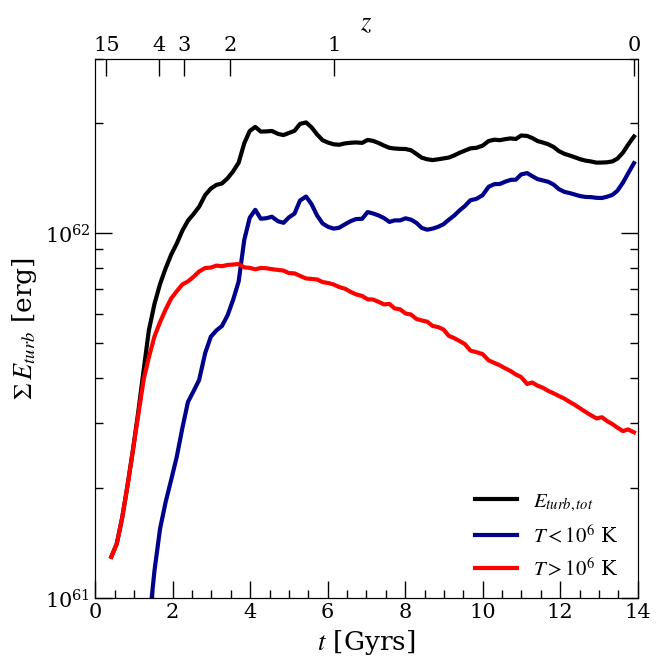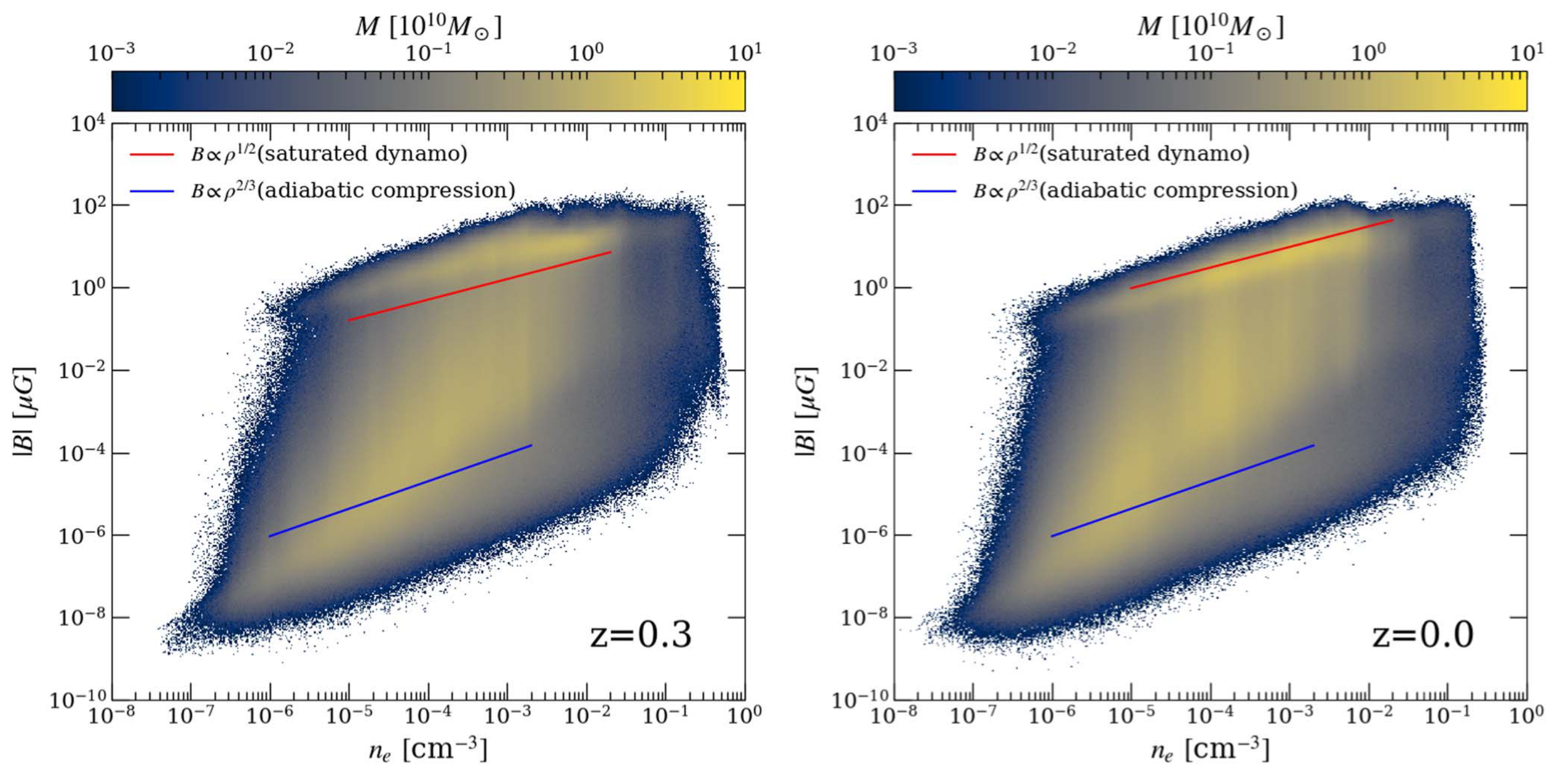Turbulence
Injection of turbulence by merger shocks and its impact on re-acceleration of Cosmic Rays and amplification of magnetic fields

Galaxy clusters are highly dynamic systems with frequent mergers, accretion events abd episodes of feedback by AGN. This stirrs up the hot intra-cluster medium (ICM) and injects energy at the scale of several hundred of kpc. This energy is transported down to scales of the Lamour radius of the free electrons and protons in the plasma of the ICM following a turbulent cascade until it dissipates on these smallest scales.


I work with state-of-the art MHD zoom-in simulations of galaxy clusters to study the injection, evolution and dissipation of turbulent energy. These ultra-high resolution simulations allow to study the role of turbulence even far outside the cluster center, as turbulence effects are resolution dependent. In addition to energy dissipation turbulence provides a non-thermal pressure component. This pressure component is found to be overestimated in most simulations (see Sayers et. al. (2021)). We find that with the high resolution of the COMPASS set the non-thermal pressure support agrees well with observations (Böss et. al. (in prep)).

Another effect turbulence has on galaxy clusters is the amplification of magnetic fields via the turbulent dynamo. In this process magnetic field lines are stretched, bent and folded by turbulent motion of the plasma. This amplifies the magnetic field exponentially over a timescale of only a few hundres of million years until the turbulent dynamo saturates. To study this effect in simulations I contributed to the work by Steinwandel et. al. (2022) where we studied the impact of resolution in the turbulent dynamo and the amplification of the magnetic field. For this worked we used the open source software packages I developed for work with our simulation code OpenGadget3, which you can find in the Software page of this website.